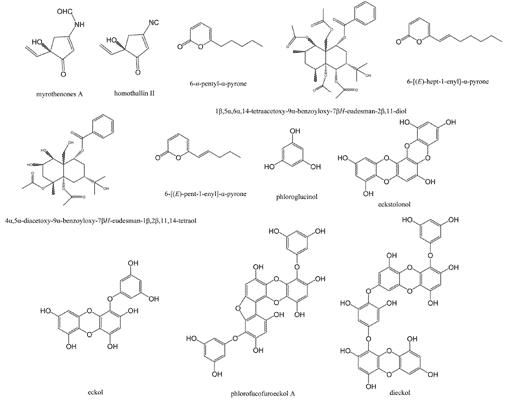Tyrosinase inhibitors from terrestrial and marine resources
Advertisement
tyrosinase is a multifunctional copper-containing enzyme widely distributed in microorganisms as well as plants and animals which has a primordial role in melanin biosynthesis thus impacting on skin color and pigmentation. This particular enzyme has the ability to catalyze the hydroxylation of L-tyrosine toL-DOPA and further oxidize L-DOPA to dopaquinones which are considered as boosters of melanogenesis. Considering the medical and cosmetic sector, a great number of researches focused on the isolation of tyrosinase inhibitors from both terrestrial and marine environment belonging to diverse chemical classes such as phenolics (flavonoids, lignans, stilbenes, coumarins, arylbenzofurans, tannins), megastigmane-type (nor-isoprenoid), terpenes, cyclic peptides, alkaloids and steroids.

Tyrosinase is known to be a key enzyme for melanin biosynthesis in plants and animals.
Dr. Bin Wu, Bentham Science Publishers
Previous studies have shown that flavonoids have the capacity of chelating the active site as well as acting as cofactor or substrate of tyrosinase, thus inhibiting its effect. Moreover, flavonoids with a 4-substituted resorcinol unit at ring B were regarded as potent tyrosinase inhibitors. Compounds belonging to the terpenes group revealed tyrosinase inhibitory activities due to different aspects including the position and relative configuration of the hydroxyl groups as well as the nature and numbers of sugar units as in cycloartane glycosides.
Furthermore, one important aspect about some alkaloids is that their tyrosinase inhibitory capacity might be attributed to the allosteric effect on the enzyme. As a whole, a great deal of compounds exhibiting tyrosinase inhibitory capacities has been isolated on land. However, potent compounds from the marine environment, especially extreme surroundings such as hydrothermal vents or arctic regions only await to be unveiled which undoubtedly hold promises in the discovery of tyrosinase inhibition, thus opening new perspective for treatment of skin disorders as well as neurodegeneration related diseases.


















































